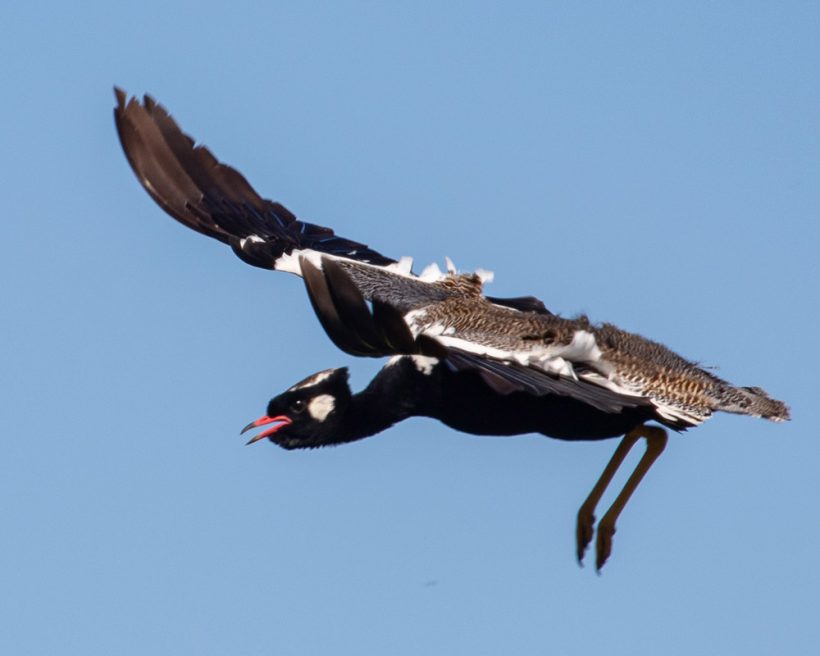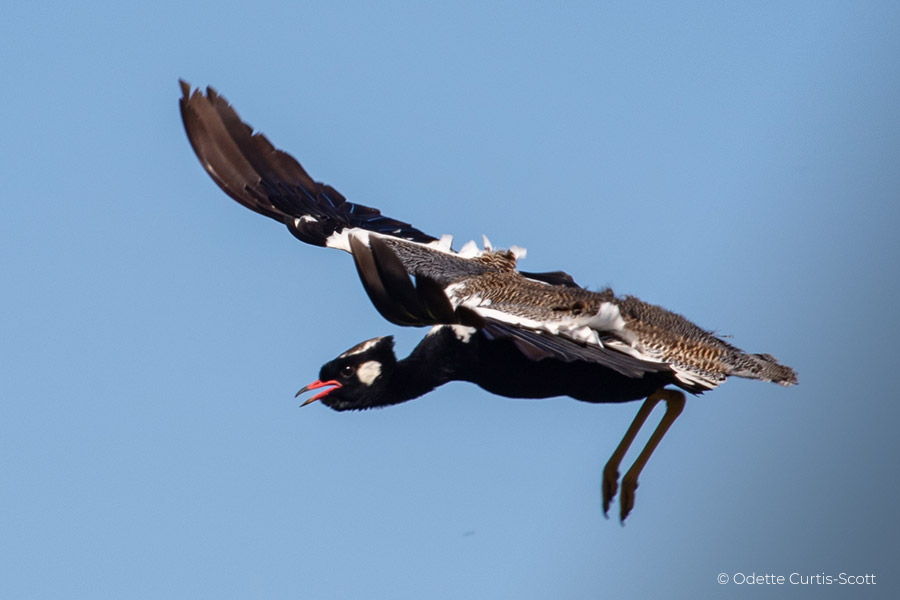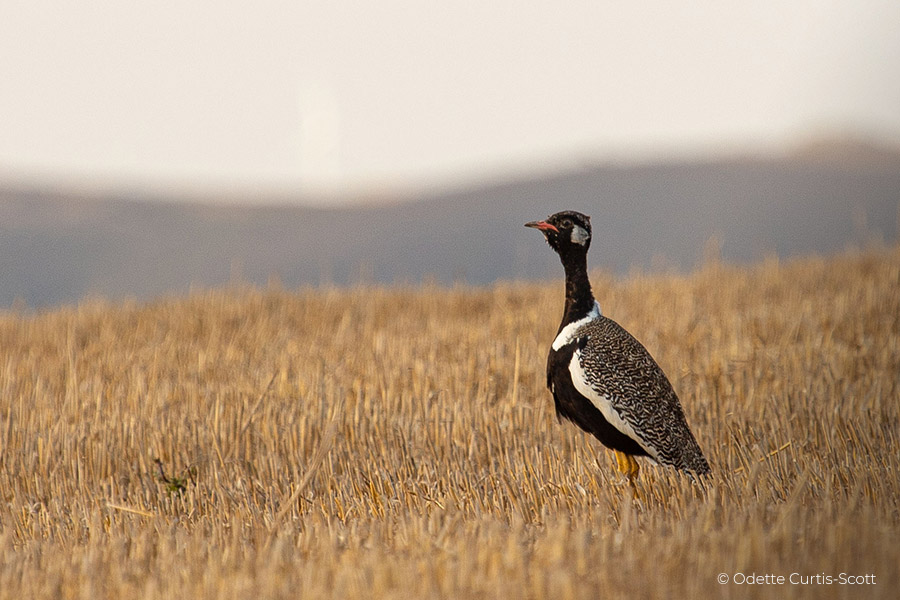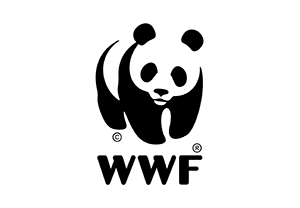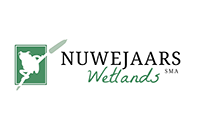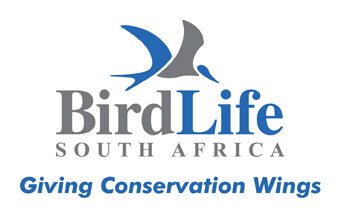Southern Black Korhaan may perhaps not have the flair associated with the striking Black Harrier. Still, protecting the species, a seemingly clumsy and often-noisy bird, is just as important to the Overberg Renosterveld Conservation Trust (ORCT), at a time when the species truly needs a helping hand.
The species was uplisted to Vulnerable on the red list several years ago, after a PhD study about 13 years ago by Sally Hofmeyr noted significant declines in population numbers. Given the fact that Southern Black Korhaan breeds in renosterveld habitats (amongst others), it has been a top priority for the ORCT. However, attempts to survey for the species and kick-start some research projects in 2021 and 2022 were not very successful, given the species’ extremely shy and secretive nature, making it a very difficult subject for field studies.
Above: Southern Black Korhaan. Image: Odette Curtis-Scott
Thus, as a first step, we reached out to partners to get a grip on current population estimates and trends.
With funding support from WWF South Africa, the ORCT has partnered with the Nuwejaars Wetlands Special Management Area and BirdLife South Africa to firstly better understand the threats to Southern Black Korhaan (Afrotis afra), and then to find ways to protect the species.
So the ORCT and partners called in the help of the experts. Ornithologist David Allan was on hand to undertake a review of the species, in order to identify population trends and conservation needs.
A major reduction in abundance
In his report, called ‘Out of the black and into the red: Review of the status of the Southern Black Korhaan’, he confirmed that available data reflects a major reduction of abundance in the Southern Black Korhaan (SBK). “This decrease was particularly rapid during the period corresponding with about 1993-2006 and slowed after this except in the Swartland area where there has been a continuous substantial decrease, possibly to the point of near local disappearance.”
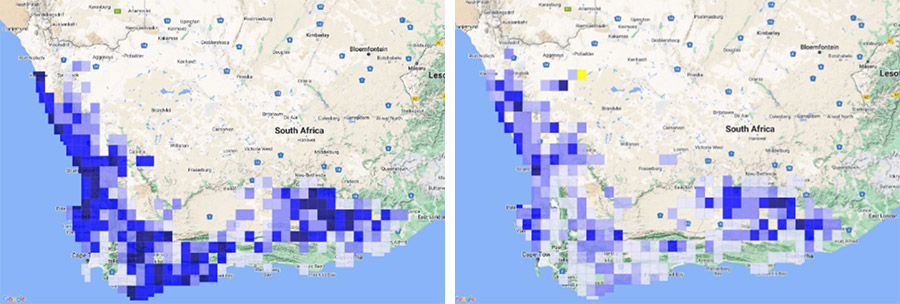
Above: Comparison of the distribution and relative abundance of the Southern Black Korhaan from SABAP1 (1982-1992, left) and 2 (2007-2023, right). The darker blue shading in the cells represents higher reporting rates and hence relative abundance.
Allan compared the Southern African Bird Atlas (SABAP) 2 data versus that of SABAP 1. The SABAP 1 data were collected between 1982 and 1992; while the SABAP 2 data spanned the 16-year period, from 2007-2023. Allan says that from the data it is immediately clear that although the Southern Black Korhaan distribution range was largely unchanged between the two periods, a marked reduction in relative abundance was noted. “This reduction in abundance appears particularly severe in the central parts of the range, suggesting the decrease is most pronounced in the Fynbos Biome.”
From the Coordinated Road Count data (or CAR counts), an initial sharp decrease is noted in the Overberg from 1998 to 2009, but this subsequently levels off, a trend that persists to the present day. Allan says, “There is certainly no evidence of any sustained recovery from the position at the end of Hofmeyr’s examination in 2010.” However, he does raise some questions as to the consistency of the CAR data, which may have been impacted by the Covid lockdowns and other factors.
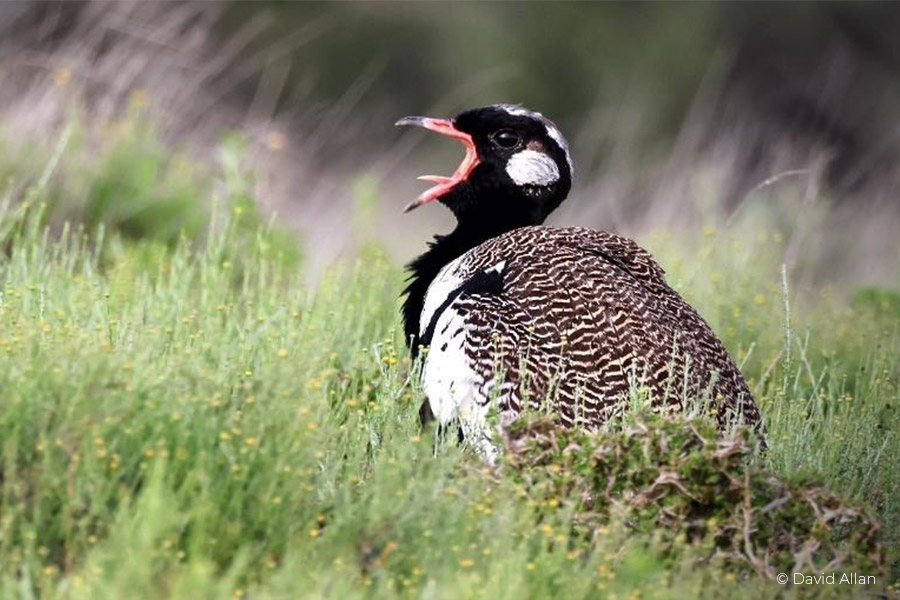
Above: Southern Black Korhaan. Image: David Allan
Habitat loss is the biggest concern
The major threat to Southern Black Korhaan is identified in the report as habitat loss and fragmentation – especially the loss of fynbos and renosterveld. He says, “Cultivation, both irrigated and dryland, is the primary driver of this habitat loss, although other land-uses have doubtless also impinged on SBK habitat, e.g. human settlement. Farming activities associated with cultivation also carry with them increased human disturbance, perhaps particularly problematic relevant to SBK breeding activities.”
What’s more, climate change is likely to further impact on the already fragmented and degraded Fynbos Biome, particularly in the lowland areas inhabited by the Korhaan – including renosterveld. And some collisions with wind-turbine blades were also recorded – a threat that is likely to increase as more wind farms are erected.
While these findings are instrumental to highlight the current state of Southern Black Korhaan, they are only seen as the starting point. Allan makes a number of recommendations – including establishing a working group to focus on SBK conservation and developing a Biodiversity Management Plan for SBK at national government level.
Above: Southern Black Korhaan. Image: Odette Curtis-Scott
A sincere thank you to WWF South Africa
According to the ORCT’s CEO, Odette Curtis-Scott, “With these data, we now have a more detailed understanding of the plight of Southern Black Korhaan and where the challenges lie. And we know that aside from our current work to protect and restore SBK habitat in the Overberg, that more needs to be done. It is critical that we use David Allan’s report to develop a strategy for the species, throughout its range (which encompasses far more than the Overberg region). We’re especially grateful to WWF South Africa for supporting this work to protect our threatened bird species – the next step is to work with a broader suite of partners to ensure that this charismatic little bustard doesn’t end up with a higher red list status than the Vulnerable status currently assigned to it.”

